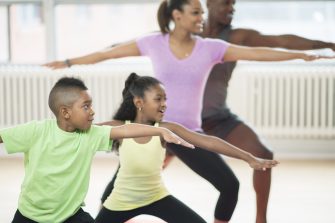Posture Rehab Exercise for Pain Relief
 POSTURE connects structure and function in the body. Even subtle asymmetries of carriage and gait may cascade from functionally compensatory motions to structural adaptations of muscle, ligament, nerve and even bone. Some patients experience relief after a chiropractic adjustment only to have symptoms return at a later time. Patterns of unconscious asymmetric motion may be the blame for this. Rehab exercise is the beginning of working to help people help themselves. While it helps, often a lot, especially when our efforts focused on the injured part, the standard rehab protocols often seem to reinforce previously learned patterns of unconscious asymmetric motion.
POSTURE connects structure and function in the body. Even subtle asymmetries of carriage and gait may cascade from functionally compensatory motions to structural adaptations of muscle, ligament, nerve and even bone. Some patients experience relief after a chiropractic adjustment only to have symptoms return at a later time. Patterns of unconscious asymmetric motion may be the blame for this. Rehab exercise is the beginning of working to help people help themselves. While it helps, often a lot, especially when our efforts focused on the injured part, the standard rehab protocols often seem to reinforce previously learned patterns of unconscious asymmetric motion.
Motion Control Exercise
The key to changing patterns of motion is to focus conscious attention on the control of that motion. Clinically, the therapeutic application of this concept was even more powerful once restrictions to both active and passive movement are removed with appropriate adjustment of the spine, extremities and soft tissue release. In the realm of scientific research, exercise using attentional focus of this sort falls under the umbrella of motion control exercise (MCE). Examples of MCEs include yoga as well as Pilates, tai chi and the Strong-Posture® exercise protocols. All share the goal of improving and strengthening posture and balance, and all do so by focusing attention to train fine control of previously neglected arcs of motion. The challenge: You can focus on only one thing at a time. Posture rehab with a systematic focus on one link in the kinetic chain at a time can help retrain fine motor control and align subjective perception of body position with objective reality. In other words, reducing errors between perception and motion, or correcting sensorimotor errors. Of interest to DCs is how this approach synergizes elegantly with efforts to restore full range motion toward symmetry (e.g., spinal manipulation) and communicate with a sensible framework of posture.
All exercise is not created equal. MCE reduces pain and disability in chronic and recurrent low-back pain.
A recent meta-analysis looked at 16 studies of MCE and found, “In patients with chronic and recurrent low-back pain, MCE seem to be superior to several other treatments.” The bottom line is that manipulation is good, exercise is good, but when there is chronic low-back pain, consciously exercising in a specific controlled pattern of motion can make a dramatic difference in pain as well as disability. Strengthening posture awareness begins with setting someone’s attention on standing taller, which synergizes with spinal manipulation.
Stand taller, feel better, move better.
According to a new Archives of Physical Medicine and Rehabilitation study that tracked height changes in men with degenerative joint disease, it’s true: Spinal manipulation can make you taller. Researchers looked at 40 middle-aged men with degenerative disc disease. Half received a placebo rubdown, while the other half received a high velocity, low amplitude spinal manipulation (HVLA SM). Height was measured precisely, mobility observed and pain documented. The researchers’ conclusion: “An HVLA SM in the lumbosacral joint performed on male subjects with degenerative disc disease immediately improves self-perceived pain, spinal mobility in flexion, hip flexion during the passive SLR and subject’s full height.” In addition to restoring motion, presumably via increased disc hydration, focusing attention to explore and retrain symmetry of motion on the newly unlocked segment can maintain and improve the beneficial effects of the adjustment.
Source: Relieving Pain with Posture Rehab Exercise by Steven Weiniger, DC via American Chiropractic Association.